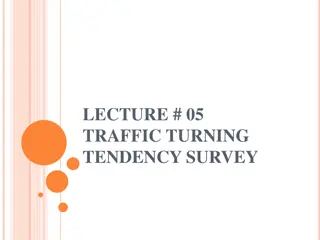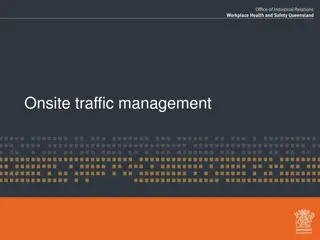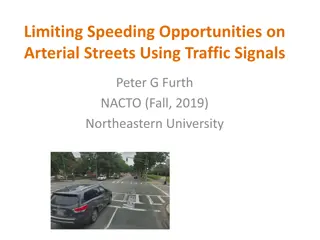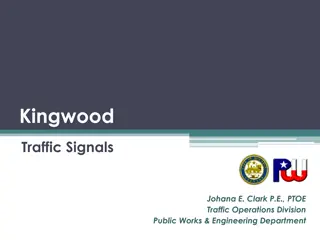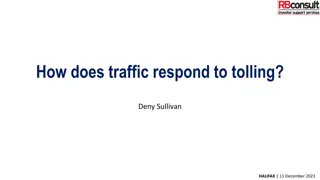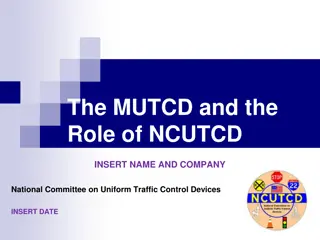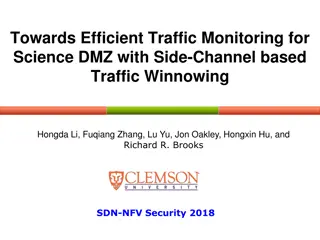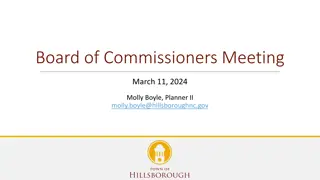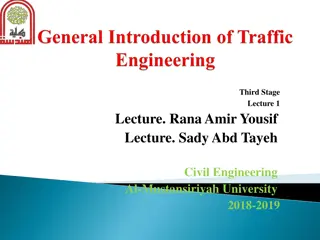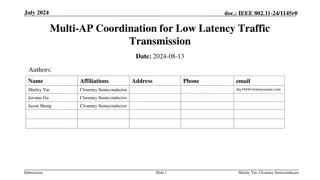Efficient Traffic Calming Strategies for Safer Streets
Designing effective traffic calming measures involves consistent treatment placement, targeted placement to address crash patterns, and consideration of street limitations. Vertical treatments like speed humps and cushions are proposed based on street width and design, offering pros and cons to enhance safety while minimizing impact.
Download Presentation

Please find below an Image/Link to download the presentation.
The content on the website is provided AS IS for your information and personal use only. It may not be sold, licensed, or shared on other websites without obtaining consent from the author.If you encounter any issues during the download, it is possible that the publisher has removed the file from their server.
You are allowed to download the files provided on this website for personal or commercial use, subject to the condition that they are used lawfully. All files are the property of their respective owners.
The content on the website is provided AS IS for your information and personal use only. It may not be sold, licensed, or shared on other websites without obtaining consent from the author.
E N D
Presentation Transcript
TRANSPORTATION Preliminary Traffic Calming Design & Public Comment
How do we approach the traffic calming design? Consistent treatment placement along entire street 400 700 spacing of treatments Close spacing is used for streets with a higher speed compliance issue Target pedestrian heavy amenities to increase safety, such as access to the retail at the intersection of Harps Mill Rd with Litchford Rd Targeted placement to fix a speed related crash issue If a pattern of speed related crashes is identified, targeted treatment placement can eliminate that crash pattern If no pattern is identified locationally, but multiple speed related crashes have occurred, consistent treatment spacing can help eliminate crashes along an entire street
Treatment Limitations Your street s width will determine what types of treatments can be placed Harps Mill Rd is approximately 41 wide Based on this street width and roadway design, vertical and horizontal traffic calming elements eligible. Based on the street context, vertical treatments are being proposed as part of this project
Speed Humps (vertical)
Speed Humps (vertical) Cons Pros Does not contrast as much with existing roadway Can be the most effective Fast installation time/Less impact during construction Impact to driving comfort Creates slight delay in emergency service s response times Versatile placement options based on compact footprint
Speed Cushions (vertical) *Speed Cushion dimensions vary based on roadway dimensions
Speed Cushions (vertical) Cons Pros Can be as effective as speed humps Does not contrast as much with existing roadway Relatively low impact installation timeline, but slightly slower than a standard hump as more labor is required Reduced driving comfort There is still some level of delay to emergency service s response times when compared with no treatment Versatile placement options based on compact footprint Slightly faster emergency service s response times due to tire slits for larger vehicles
Design Process Based on the speed progression and crash issue identified along Harps Mill Rd, we are proposing treatment spacing of approximately 400 500 intervals No reoccurring speed related crash issues were identified. Speed reduction will be the focus of this effort
Project Goal The project will be deemed effective if 85% of drivers are going at or below the 25 mph speed limit and top driver speed is capped at around 5-7 mph over the speed limit Based on your location, Johnsdale Rd and Whitehall Ave are the closest completed traffic calming project to you with this style of completed project. We encourage you to go drive these streets yourself to experience the final project. Once the project has been completed for approximately 6 months, an after-study will be performed to measure project effectiveness
Public Comment What are your thoughts on the proposed design? Should we place more or less treatments along the street? Have we adequately addressed problem areas you see? Should we place another traffic calming treatment in a targeted location? What are your thoughts on the mix of treatments being proposed? What other questions, comments, suggestions do you have?
Please direct all comments and questions to staff using the PublicInput portal for Harps Mill Rd - E. Staff will respond and we can have a neighborhood wide conversation.






